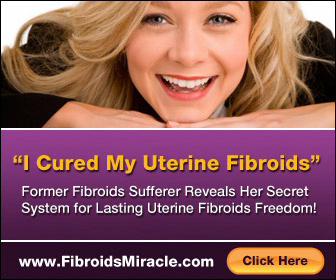Fibroids typically grow slowly or not at all. There are many cases that they shrink on their own, especially after menopause.
Still, in cases where symptoms have become bothersome, are worsening, or have not improved with medication, fibroids may be treated with surgery or ultrasound therapy. Note that surgery may involve either removing just the fibroids or the entire uterus.
At home, diet changes, care, lifestyle changes, and natural remedies may help treat fibroids and relieve symptoms. Relief depends on how severe the symptoms are and how your fibroids have progressed.
Natural Treatment Options
A study in China shows that obesity and excess weight increased the risk for uterine fibroids. It is because fat cells make high amounts of estrogen. Losing weight may help prevent or reduce fibroid size.
Daily diet is also an important factor in treating fibroids because the right nutrition can help maintain a healthy weight and reduce the risk of further fibroid development. Certain foods may also help ease symptoms.
Do keep in mind, however, that eating too much red meat increases the risk of uterine fibroids. Drinking alcohol also raises your chances of developing this medical concern.
Likewise, eating lots of refined carbs and sugary food may trigger or worsen fibroids. These foods raise blood sugar levels, causing the body to produce too much insulin. Avoid or limit eating foods like: white rice, pasta, and flour, sugary drinks such as soda, corn syrup, boxed cereals, baked goods, potato chips, and crackers.
On the other hand, fiber-rich unprocessed foods help prevent excess weight gain, balance hormones, and curb the appetite. Interestingly, brightly colored foods also help reduce inflammation and lower risk of fibroids.
Add foods to your diet such as brown rice, lentils and beans, whole grain bread and pasta, couscous, quinoa, fresh and dried herbs, dried fruit, whole grains, and raw and cooked vegetables and fruit.
Milk and dairy may help reduce fibroids because they contain high amounts of calcium, magnesium, and phosphorus. Research also confirms that the risk for fibroids increases if you have limited supplies of vitamin D and vitamin A. Taking vitamins B1, B6, and E, as well as magnesium and omega-3 fatty acids may also help ease the painful symptoms of uterine fibroids.
For herbal remedies, further research is needed to find out what remedies work and what the most effective dosage is. Traditional Chinese medicine offer several herbs that slow fibroid growth and treat symptoms. One medicine formula is called the Guizhi fuling or Gui Zhi Fu Ling Tang.
Drinking green tea may help reduce the size and number of fibroids because of a bioflavonoid called EGCG. It has the ability to reduce inflammation and remove toxins from the body. Chasteberry or vitex, fibrous herbs such as senna and isphagula, and castor oil may help balance hormone levels and ease occasional constipation.
Stress is also a factor in fibroid growth. Thus, there are treatment options that help manage stress. Warm compresses, warm baths, yoga and exercise, and massage therapy may help.
The Chirurgical Approaches
If the symptoms are severe, there are a few different options. Surgery is one of those. Most of these surgeries can be done by laparoscopy in which the doctor makes small cuts instead of one big cut. Less pain and shorter recovery time is thus expected.
Myolysis is done by cutting the blood supply to the fibroid so it shrinks and dies through freezing, heating, or radiofrequency energy. It is best for small fibroids, however it may affect fertility.
Uterine Artery Embolization is done by inserting a thin tube called a catheter into the uterine artery. A substance is injected, cutting the blood supply. It will shrink or kill them off and allow the uterus to decrease in overall size. But, there are risks such as damage to the blood vessels.
Hysterectomy is the best option if the fibroids are large and the woman has very heavy periods. It is a major surgery, requiring the removal of the uterus. It depends on the size of fibroids.
Myomectomy removes the fibroids but leaves the healthy tissue of the uterus. This is a good option for those who want to get pregnant in the future. There are three choices for how to do the myomectomy depending on the size, number, and location of the fibroids.
Abdominal myomectomy, on the other hand, is needed if the fibroids are really large. It can lower the risk of the uterus opening when one delivers, so doctors recommend getting a C-section during labor.
Laparscopic myomectomy involves making small cuts that allow for the use of tools to remove the fibroids. Hysteroscopic myomectomy is done if the fibroids are inside the uterus. The doctor will use high-frequency electrical currents to cut loose the fibroids.
Treatment for uterine fibroids ultimately depend on the person herself. But to decide what treatment or surgery is best, it is recommended that she consult her doctor first.


